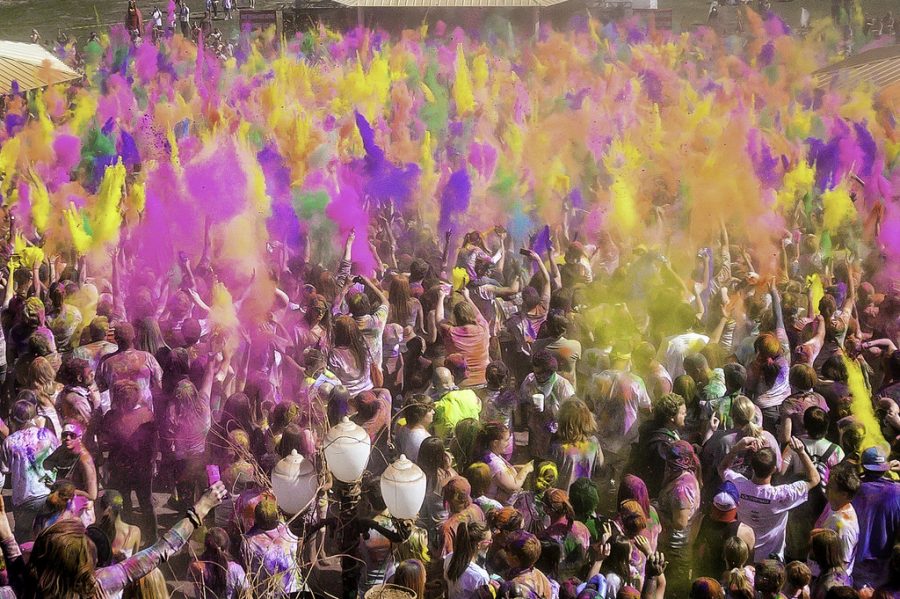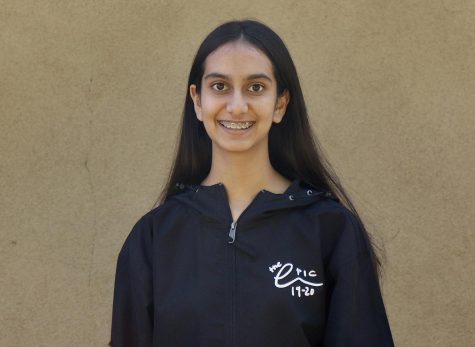Holi season: Bay Area celebrates spring with color
April 20, 2019
Vibrant colors collide in the excitement-filled air as friends and family dance to energetic, upbeat music. To celebrate the Indian festival Holi, which marks the beginning of spring, people come together to splash each other with colored powder and water.
Also known as the “Festival of Colors,” Holi occurs annually at the end of March or beginning of April, depending on the Hindu lunisolar calendar. Traditionally, people smear each other with gulal — colored powder made of cornstarch and dye. Many celebrations consist of water fights as well. Some spray the crowd with a pichkari, or traditional water gun, while others directly splash their friends with a bucket of water.
“My favorite part about Holi is the feeling of being carefree and being able to throw colors at anyone without being judged,” said freshman Bhuvana Mukkamala, who attended Cupertino Holi at Memorial Park on April 7.
Senior Tanvee Joshi, who celebrated Holi on March 24 at the Shiv Durga Temple in Sunnyvale, echoed a similar sentiment.
“I love dancing to the music,” Joshi said. “Since no one can identify you underneath all that color, it [gives you] a chance to loosen up.“
The first mentions of Holi date all the way back to the 4th century CE. According to Hindu mythology, a demoness named Holika was stripped of her powers by Hindu deity Lord Vishnu because she was using them for evil purposes. Thus, the festival is called Holi and signifies the triumph of good over evil. The tradition of throwing colored powder and water, however, stems from the Hindu mythological love story of Lord Krishna and his childhood friend Radha. Krishna acquired a distinctive blue complexion as a child and often felt sad because no girls would like him due to the color of his skin. As a result, he splashed Radha with color using a pichkari, as a prank. Such play with colors gained so much popularity that Holi has become a full-fledged festival today.
“I personally have a lot of fun with water guns that have color in the water,” said freshman Pranay Mamileti, who attended Cupertino Holi as well. “People’s faces when they get hit with the cold water is priceless.”
Although originally a Hindu holiday, Holi is meant to be an inclusive event, uniting people regardless of race, gender, caste or religion. In fact, some of the grandest Holi celebrations in India were once hosted within the Muslim-ruled Mughal Empire. It is said that people of all castes were allowed to smear color on the emperor.
“The best part is that Holi is a community event, so all sorts of people come,” Joshi said. “Everyone plays Holi with everyone, there isn’t a divide.”
In the Bay Area, Holi celebrations remain as popular and diverse as ever. There are innumerable events scattered throughout locations in the Bay Area, one of the largest being Asha’s Holi on April 20 at Stanford University. Each festival is filled with joy, exuberance and color, so this Holi season, go out and experience what this holi-day is all about.



































































